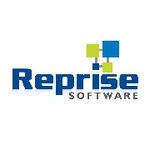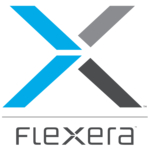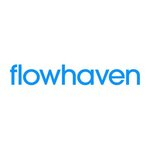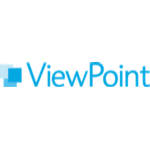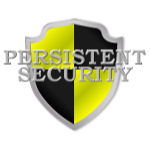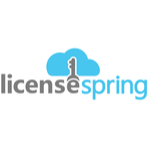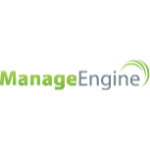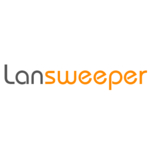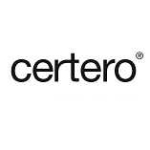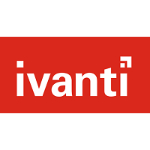TechnologyCounter provides genuine, unbiased real user reviews to help buyers make informed decisions. We may earn a referral fee when you purchase through our links, at no extra cost to you.
List of 15 Best License Management Software
Showing 1 - 15 of 54 productsAre you tired of managing multiple software licenses for your organization? Look no further than Reprise License Manager. Designed to simplify the license tracking and distribution process, this powerful software allows you to easily manage all your...Read Reprise License Manager Reviews
Flexera FlexNet Manager is a solution for software asset management. This top-tier software offers unmatched capabilities and tools to optimize software licenses and control IT costs, ensuring compliance and reducing risks. With its advanced features...Read Flexera FlexNet Manager Reviews
Flowhaven is a software designed to streamline and enhance your organizations licensing and brand management processes. Say goodbye to complicated spreadsheets and scattered information, and hello to a user-friendly platform that simplifies and centr...Read Flowhaven Reviews
Freshservice is a popular cloud-based solution for ITSM (IT Service Management) and ITIL Service Desk. It offers a seamless user experience, combined with advanced capabilities for Ticketing and Asset Management. With a customer base of over 20000,...Read Freshservice Reviews
OpenGov Cloud, the game-changing software solution for government agencies. With its user-friendly interface and innovative features, OpenGov Cloud streamlines and modernizes the way government organizations manage their operations and finances. Say...Read OpenGov Cloud Reviews
SafeGuard LM is a solution for protecting your valuable digital assets. With its advanced security features and user-friendly interface, SafeGuard LM provides unparalleled protection against cyber threats. Stay one step ahead and secure your data wit...Read SafeGuard LM Reviews
Keygen is a solution for generating software license keys effortlessly. With its user-friendly interface algorithms, Keygen makes the process of generating unique keys quick is a . Experience efficient and hassle-free software activation with Keygen...Read Keygen Reviews
QuickLicense is a software that allows businesses to efficiently manage their software licenses and protect their intellectual property. Designed to simplify the licensing process and protect digital assets, QuickLicense is a must-have for any compan...Read QuickLicense Reviews
License Spring the latest software designed to simplify and streamline the licensing process for businesses of all sizes. Packed with innovative features and user-friendly interface, License Spring ensures efficient management of licenses and complia...Read License Spring Reviews
Cryptlex is a software that provides a secure solution for software licensing and activation. Developed with the latest technology, Cryptlex simplifies the entire licensing process for developers and ensures maximum protection against piracy. Say goo...Read Cryptlex Reviews
AssetExplorer is a powerful ITAM tool that enables IT managers to effortlessly gain visibility on and control over their IT assets across the enterprise. It offers hardware and software asset discovery and inventory management, custom workflows to au...Read ManageEngine AssetExplorer Reviews
Lansweeper simplifies your IT asset management by providing a powerful, user-friendly solution that offers detailed insights into your network devices and software. With Lansweeper, you can effortlessly track and manage your IT assets, ensuring optim...Read Lansweeper Reviews
Certero the powerful software solution designed to streamline your IT asset management processes and revolutionize the way you do business. With its advanced features interface, Certero is the go-to choice for businesses looking to optimize their IT...Read Certero Reviews
Ivanti is a leading software company known for providing innovative solutions to streamline and simplify IT operations. With a commitment to enhancing productivity and reducing costs, Ivanti offers a range of products that address critical business n...Read Ivanti Reviews
KACE, is a solution for modern IT management. With its user-friendly interface features, KACE streamlines tasks and increases efficiency for your organization. Say goodbye to tedious manual processes and hello to a more streamlined and effective appr...Read KACE Reviews
- What Is License Management Software?
- Top Reasons Why Businesses Need License Management Software?
- What Are the Top Key Features of License Management Software?
- What Are the Top Benefits of License Management Software?
- What Are the Steps to Choose the Right License Management Software?
- What Are the Types of License Management Software for Different Industries?
- What Are the Technology Trends for Best License Management Software?
- What Are the Deployment Options for License Management Software?
What Is License Management Software?
License management software is a tool that facilitates the management of licenses inside an organization. This particular software is utilized for the purpose of monitoring licenses that have been issued by software producers, including those pertaining to operating systems and application packages.
Additionally, it aids in the management of the quantity and placement of computers or devices in which licenses are utilized, while also facilitating the determination of the quantity of licenses being utilized at any given moment.
License management software is also capable of facilitating the monitoring and documentation of any modifications made to the software license. The process guarantees that licenses adhere to prevailing regulations.
This software also facilitates the procurement and renewal procedures of licenses within an organization. These tools prove to be quite advantageous for larger firms that are tasked with managing several licenses for diverse software applications, as they streamline the overall process.
Licence management software has the capability to automate the process of follow-up for license renewals, thereby notifying users about the need to renew their licenses. This mechanism guarantees the perpetual validity of licenses, so mitigating the financial burden associated with license renewals by minimizing the frequency of new license acquisitions.
In general, licensing management software is a highly significant asset for firms that frequently utilize various software applications. This software facilitates the maintenance of up-to-date licenses and streamlines the whole management process.
Top Reasons Why Businesses Need License Management Software?
1. Managing licenses and tracking changes: To ensure compliance with the vendor's legal obligations, it is imperative to monitor the utilization and expiration dates of licenses.
2. Automated alerting and notifications: The implementation of automated alerts is essential in order to effectively alert users of the impending expiration of licenses and the subsequent requirement for renewal.
3. Increased visibility: Enhance the level of insight into license utilization in order to ascertain that licenses are neither being underutilized nor overutilized.
4. Cost savings: One potential approach to mitigating software license expenses is the identification of underutilized licenses and the facilitation of more favorable negotiations with vendors, hence resulting in cost reduction.
5. Reduced risk: To mitigate the risk of software piracy, it is crucial to take measures that can help prevent any legal consequences and associated charges.
6. Streamlined compliance process: Achieve adherence to vendor agreements and industry laws through the implementation of automated audits and reporting mechanisms.
7. Software asset optimization: To enhance the efficiency of software investments, it is imperative to optimize the utilization of available licenses and diligently monitor usage patterns.
8. Cloud-based monitoring: The monitoring of cloud apps and computers is essential in order to verify that software usage remains compliant with the terms and conditions stipulated in license agreements.
9. Improved productivity: To mitigate the occurrence of application usage delays resulting from software downtime, it is imperative to address issues arising from mismanaged or expired licenses.
10. Ability to scale: Efficiently adjust the number of licenses in response to the evolving requirements of the organization.
11. Efficient software usage: To optimize software utilization, it is recommended to implement concurrent license pools and expedite program access for users.
12.Auditing capabilities: Conduct an audit and provide a comprehensive report on license utilization in order to detect instances of software misuse or inefficiency.
13.Access control: Establish user rights and regulate access privileges for certain software applications.
14. Analytics: The objective of this study is to conduct an analysis of license utilization in order to identify prevailing software patterns, detect instances of license wastage, and forecast future licensing trends.
15. Optimized purchasing: Enhance and enhance decision-making about software investments through the utilization of license usage data.
What Are the Top Key Features of License Management Software?
1. Automated License Control: License management software has the capability to autonomously identify and discern any alterations or adjustments made to current license agreements, thereby guaranteeing the enforcement of relevant licensing regulations.
2. Administrative Access: The best license management software grants users with administrative privileges, allowing them to effectively oversee licenses, users, and events.
3. License Lifecycle Tracking: License management software has the capability to be designed in such a way that it is able to monitor and keep a record of various aspects pertaining to licenses, including but not limited to expiration dates, version history, and other relevant facts, during the entirety of the license lifetime.
4. Compliance Enforcement: The use of licence management software may effectively guarantee that all users are utilizing the latest licenses, so contributing to the maintenance of compliance with relevant legislation.
5. System Security: License management system can additionally contribute to enhancing system security through the use of authentication techniques and function-based access control mechanisms.
6. Usage Tracking: License management software has the capability to monitor and record usage data for all users, thereby providing users with valuable information regarding capacity utilization and usage patterns.
7. Reporting: License management tool allows users to generate reports that are based on various parameters such as usage, license information, compliance, and other relevant factors.
8. Vendor Management: The best license management system plays a crucial role in streamlining various vendor management activities, including contract renewal, compliance monitoring, and purchasing.
9. Multi-Platform Support: The best license management software facilitates the efficient administration of licenses across many platforms, encompassing Windows, Mac, Linux, and various other operating systems.
10. Online Billing: License management tool streamlines the process of online invoicing and payment processing for licenses.
What Are the Top Benefits of License Management Software?
1. Increased Visibility: The best license management software provides businesses with a full perspective of their licensing inventory, enabling them to enhance their management and monitoring of license utilization.
2. Lower Compliance Risks: License management system plays a crucial role in addressing software compliance concerns by ensuring that firms own the appropriate number of licenses for their respective products and users.
3. Automated Data Collection: The implementation of the licensing management system streamlines the data collection process through automation, thereby obviating the requirement for manual entry and mitigating the potential for human errors.
4. Improved Procurement Process: The implementation of automated procurement processes enables administrative personnel to allocate their time towards more valuable activities, while simultaneously mitigating expenses.
5. Integration with Existing Software: The integration of licensing management software with pre-existing software facilitates the streamlined management and monitoring of license utilization across numerous systems.
6. Streamlined Reporting Process: The utilization of licensing management software facilitates the generation of usage reports, hence enhancing accuracy through the identification of discrepancies.
7. Scalability: License management tool possesses the capability to adjust its capacity to accommodate the requirements of an organization, rendering it a highly suitable resolution for enterprises of varying magnitudes.
8. Security: License management software enables enterprises to implement security measures for accessing licensing information, thereby enhancing the security of their license data.
What Are the Steps to Choose the Right License Management Software?
1. Identify your needs: Initially, it is imperative to ascertain the license requirements pertinent to your enterprise. It is vital to take into account the various prerequisites and categories of licenses that must be obtained for effective management, encompassing software, hardware, services, and other relevant aspects.
2. Research: Undertake a comprehensive investigation into the existing software choices for license management. To identify the most appropriate software for your needs, it is advisable to conduct a thorough examination of reviews, pricing comparisons, and features.
3. Identify features: Please compile a comprehensive inventory of the necessary attributes required for the license management system. The aforementioned capabilities encompass cloud storage, automatic license renewal, licensing control settings, and further functionalities.
4. Security: A license management tool is imperative to select licensing management software that possesses both robust security measures and a high level of dependability. Please verify if the system satisfies any security criteria that you may possess.
5. Cost: Examine the pricing of the license management software in relation to alternative software solutions now accessible in the market. Select a cost-effective alternative that fulfills your requirements.
6. Support: Additionally, it is imperative to assess the quality of customer service and technical support provided by the licensing management software. It is advisable to explore user guides, tutorials, and customer service channels that are readily accessible.
7. Test: Prior to completing the purchase, it is advisable to conduct a comprehensive evaluation of the license management software to ensure its compatibility with your specific requirements.
What Are the Types of License Management Software for Different Industries?
License management software has the capacity to embrace a diverse array of industry-specific initiatives, contingent upon the specific requirements of the organization.
The following are some common types of license management software for different industries:
1. Manufacturing: The utilization of manufacturing licensing management software facilitates the monitoring and oversight of licenses pertaining to goods, components, and services within enterprises. The primary purpose of its utilization is to assure adherence to relevant rules and regulations, while furthermore offering valuable information regarding product utilization, price, and inventory.
2. Healthcare: Healthcare license management software offers robust security features and access control mechanisms for regulated substances, medical apparatus, as well as various medical documents and records. The system enables healthcare practitioners to uphold regulatory compliance while also assuring user accountability and responsibility.
- Managing access privileges.
- Tracking production or unlock cycles.
- Controlling access to sensitive data.
- Preventing misuse and theft.
3. Financial Services: Financial services license management system assists organizations in maintaining compliance with financial regulations and policies, including but not limited to Know Your Customer (KYC) standards, anti-money laundering protocols, and other relevant legal frameworks.
The utilization of financial services license management software facilitates the effective administration of client data access, monitoring of customer transactions, prevention of unauthorized access, and provision of comprehensive insights into the financial activities of consumers.
4. Education: Education license management tool utilized by educational institutions, including schools and universities, to effectively monitor and administer their licensing obligations. These obligations encompass a range of areas, including student software licenses, textbook licensing, and licenses pertaining to course materials.
Additionally, this technology can be employed for the purpose of monitoring faculty licenses, ensuring copyright compliance, and facilitating various educational endeavors.
5. Government: Government license management software facilitates the efficient management and monitoring of licenses held by government agencies, encompassing many categories such as contractor licenses, government-led research programs, and other governmental endeavors.
The utilization of government license management software can effectively contribute to the maintenance of legal compliance and safeguarding of essential government data.
What Are the Technology Trends for Best License Management Software?
The technology trends for the best license management software include:
1. Cloud-Based Management: Cloud-based licensing management allows enterprises to conveniently access and manage their license inventory from any location worldwide. The implementation of this approach results in a decrease in expenses associated with the management and storage of license data, while facilitating enhanced centralized control.
2. Increased Automation: The utilization of automated license management software is experiencing a growing trend in popularity due to its ability to simplify and optimize the license renewal procedures. Additionally, this software aids in cost reduction by promptly notifying users when licenses are nearing expiration.
3. Improved Security: With the increasing adoption of cloud computing by many enterprises, it becomes imperative for licensing management software to incorporate additional security measures, like encryption, in order to enhance data protection. This measure guarantees the protection and authenticity of the licensing data belonging to users.
4. Increased Visibility: Contemporary licensing management systems have been specifically developed to offer users instantaneous access to information regarding their licenses and subscription status. This software application assists customers in effectively monitoring and managing their licenses.
What Are the Deployment Options for License Management Software?
The deployment options for license management software include:
1. On-Premise: The license management software is housed on the internal servers of the customer in this scenario. This alternative provides a superior degree of adaptability, since clients possess the ability to customize the software according to their own requirements and exercise full authority over their data.
2. Cloud-Based: The cloud hosts the licensing management software in this scenario. The aforementioned alternative is typically more economically advantageous compared to an on-premise solution, and offers consumers enhanced scalability. Nevertheless, the level of control that consumers possess over their data is diminished due to the fact that the management of the application is mostly handled by the cloud provider.
3. Hybrid: This paradigm integrates a cloud-based solution with an on-premise solution, providing customers with the advantages of both approaches. Hybrid deployments provide organizations with the advantageous combination of on-premise infrastructure's flexibility and control, with the cost-effectiveness and scalability offered by cloud computing.
